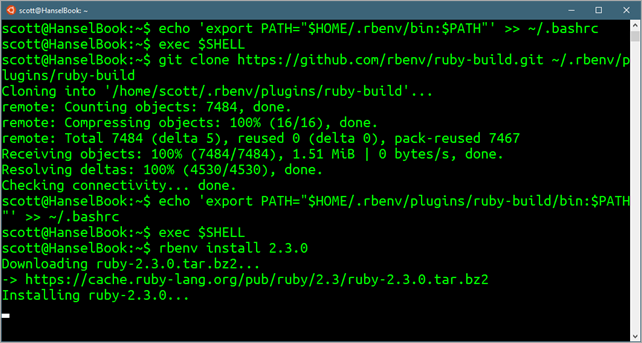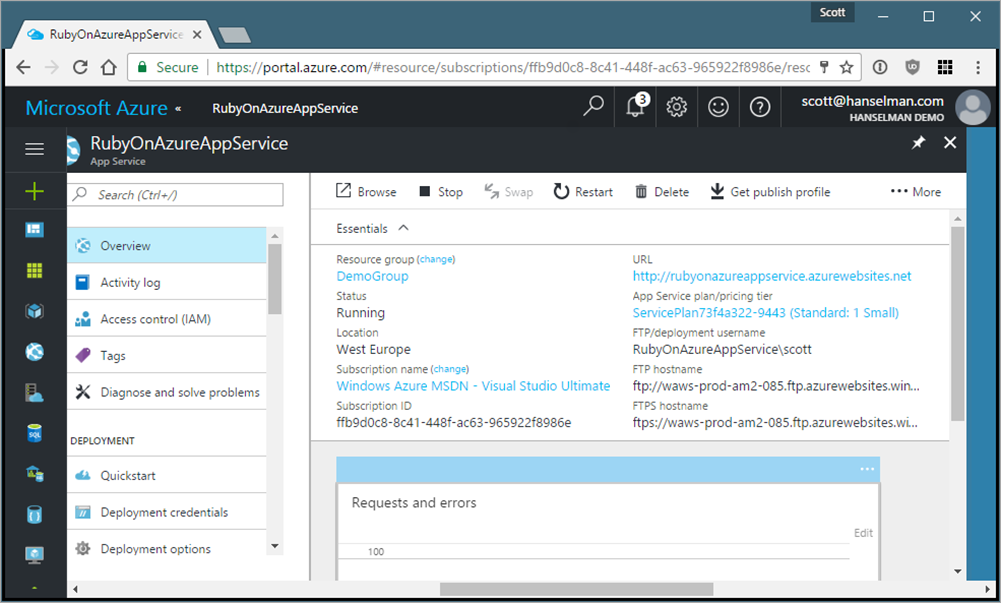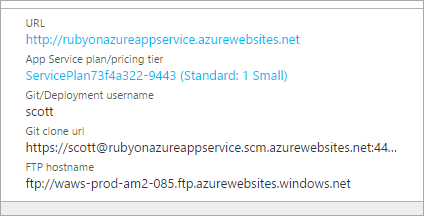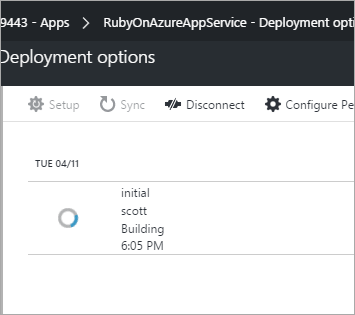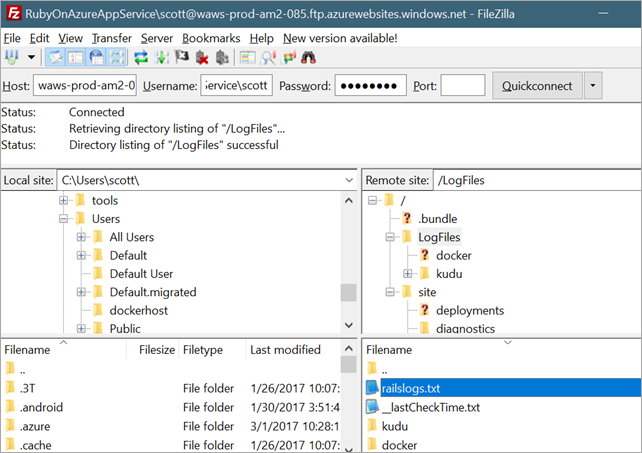We believe that everyone is a creator at heart and that creativity is an essential human trait. And, no matter who you are, Windows 10 is built to empower the creator in all of us. To show you some of the great new features coming in the Creators Update, we’ve got a special episode of This Week on Windows just for you. New innovations in the Windows 10 Creators Update include 3D in Windows 10, built-in game broadcasting, new tab management features and more in Microsoft Edge, and enhanced security features such as a new Microsoft privacy dashboard.
You can get the Creators Update in a few different ways. If you already have a Windows 10 PC and have automatic updates enabled, the update will be delivered to you when it’s ready. If you are an advanced user and would like to get the update manually, visit this blog post to learn how to get the Creators Update. Another great way to take advantage of the Creators Update is to purchase a new Windows 10 PC from Surface or our partners. Currently, we’ve got some great offers on Windows 10 PCs from Microsoft Store – you can save up to 33% on select PCs, including Dell Inspiron 15, Dell Inspiron 13, HP Pavilion x360, and ASUS ZenBook Flip, at Microsoft Store and microsoftstore.com in the U.S., Canada, and Puerto Rico through April 17.
And, in case you missed it, yesterday we announced new creativity apps with unique capabilities for Surface Dial.
Here’s a more detailed list of what’s new in the Windows 10 Creators Update
3D in Windows 10

Now with the Creators Update, you have a new app called Paint 3D and access to an online creative community at Remix3D.com.
3D in Windows 10 comes to life in the Creators Update to allow anyone to experience, create, and share in a new dimension. With 3D, we can communicate ideas and express ourselves better, and learn faster, because it’s much more representative of the world we live in.
Now with the Creators Update, you have a new app called Paint 3D and access to an online creative community at Remix3D.com. The all-new Paint 3D allows you to create or modify 3D objects, easily change color or texture, or turn 2D images into 3D works of art. To launch Paint 3D, click here.
With Remix3D.com, you can share, discover, and be inspired by millions of 3D objects. Remix3D.com lets you connect with other creators, find new ideas, and get instant access to a library of 3D objects to customize, remix, and share with the creative community.
New features for Windows 10 PC gamers: gamers can share their passion by connecting, streaming and playing together
Beam game broadcasting
With the Creators Update, built-in game streaming with Beam is the easiest and most interactive way to stream your gameplay on Windows 10. Pressing Windows key + G while playing your game will bring up the Game bar, where you’ll find we’ve added a broadcast icon to launch Beam – no extra software required.

Built-in game broadcasting on Windows 10. Now you can effortlessly stream your gameplay using the Game Bar—just hit Windows key + G, click Broadcast, and start streaming on Beam—all without the need for additional log-ins.
This offers everyone the opportunity to showcase their creativity as a game broadcaster. And with Beam’s low-latency technology, viewers experience less than a second of delay, enabling broadcasters to engage and interact with their viewers in near real-time. This low-latency technology enables Beam broadcasters to incorporate interactive features, such as animation and sound triggers, right into their streams.
New gaming section in System Settings
Inside the main Windows System Settings, a new section has been added: Gaming, identified with the Xbox logo. This new section unifies your Windows 10 gaming settings in one place. In the Creators Update, there are four settings options: Game bar, GameDVR, broadcasting, and Game Mode. Game Mode may be easily turned on and off for specific games using the Game bar (Windows key + G).
Game Mode
With Game Mode, it’s our goal to provide a better and more consistent gaming experience on Windows 10, by dedicating more system resources to your game. Game Mode also works for both Win32 and UWP games. To enable Game Mode while playing a game, pull up the Game bar (Windows key + G) and click on the Settings button to opt the running game into using Game Mode. The Creators Update is just the first milestone in our commitment to Game Mode and Windows 10 performance improvements for PC gaming.
More games supported by Game bar
In the Windows 10 Creators Update, we’ve continued to expand support for Windows Game bar in full-screen mode to more than 80 of the most popular PC games. You can also now manage this feature in the new Gaming section of Windows Settings. Look for “Game bar,” and make sure the “Show Game bar when I play full-screen games Microsoft has verified” setting is checked. A regularly updated list of supported titles is available here.
To learn more about all the new gaming features available in the Creators Update, head over to Xbox Wire.
Microsoft Edge gets even better with a whole new suite of tab management features, new extensions, and a new bookstore and reading experience
Microsoft Edge is the faster, more secure browser built for Windows 10, and with the Creators Update, Microsoft Edge is faster than Google Chrome and Mozilla Firefox and offers longer battery life. When unplugged and on-the-go, you can stream video and browse longer. Microsoft Edge streams video up to 3 hours longer than Google Chrome and up to 5 hours longer than Mozilla Firefox, letting you binge watch your favorite show longer without needing a charge. You can also browse nearly a full hour longer with Microsoft Edge when compared to Google Chrome, and nearly two hours longer when compared to Mozilla Firefox.**

Tab preview bar: It’s easy to lose track of what’s in your tabs, especially when you have many tabs from the same site, with similar titles and icons.
Tab preview bar: It’s easy to lose track of what’s in your tabs, especially when you have many tabs from the same site, with similar titles and icons. Tab preview bar allows you to easily glance at a visual preview of every tab you have open without leaving your page. You can scroll through the list with touch, mouse wheel, or a touchpad.

Set tabs aside: We’ve added two new buttons next to your tabs in Microsoft Edge to help you quickly manage all your tabs without losing your flow.
Set tabs aside: We’ve added two new buttons next to your tabs in Microsoft Edge to help you quickly manage all your tabs without losing your flow. Set these tabs aside feature allows you to sweep away your open tabs, giving you the ability to restore them later. And with Tabs you’ve set aside, you can preview thumbnails of web pages you set aside, and restore an individual or a collection of web pages to pick up where you left off.
Import favorites from another browser when you switch to Microsoft Edge: You can import your favorites, browsing history, and other data from another browser you have installed, in one simple step. Use the Import from another browser feature under Settings to select the browsers you want to move your data from.***

Jump List for Microsoft Edge: You can now launch a new window or new InPrivate window for Microsoft Edge straight from its Taskbar icon.
Jump List for Microsoft Edge: You can now launch a new window or new InPrivate window for Microsoft Edge straight from its Taskbar icon. Simply right-click or swipe up on the Microsoft Edge icon in the Taskbar, and pick the task you want!

The Creators Update will also bring more extensions to Microsoft Edge.
The Creators Update will also bring more extensions to Microsoft Edge, including Ebates, Intel TrueKey, Read & Write, Ghostery, and RoboForm, among others.
Tap the pen or highlighter in Web Note, and you’ll now see the full set of Windows Ink colors.
What’s new in the Windows Store with the Creators Update
We’ve added a new digital category in the Windows Store called books (US only) joining games, apps, movies/TV, and music. With books in the Windows Store, you can discover and read e-books from your favorite authors across genres you love – from sci-fi to thrillers, to children’s books, and everything in between.

With books in the Windows Store, you can discover and read e-books from your favorite authors across genres you love – from sci-fi to thrillers, to children’s books, and everything in between.
In the Windows Store, readers will find favorite titles, including New York Times Bestsellers, amongst hundreds of thousands of others. We have partnered with the top publishers and partners, Penguin Random House, Simon & Schuster, HarperCollins Publishers, Hachette Book Group, Houghton Mifflin Harcourt, as well as Ingram Content Group, to bring an extensive catalog of great books to the Windows Store. It will feature content such as Game of Thrones by George R.R. Martin, American Gods by Neil Gaiman, Cross the Line by James Patterson, End of the Watch by Stephen King, and Tools of Titans by Tim Ferriss.

Once you’ve purchased a book from the Windows Store, you can start reading immediately with Microsoft Edge, which supports offline reading without an internet connection.
Once you’ve purchased a book from the Windows Store, you can start reading immediately with Microsoft Edge, which supports offline reading without an internet connection. What’s more, in Microsoft Edge you can easily personalize your reading experience with custom font sizes, layouts, and themes. Cortana* integration pulls information from the web right into your reading experience. Microsoft Edge has integrated Learning Tools accessibility features like Read Aloud and text spacing to make it easier for everyone to read, including people with learning differences like dyslexia and English Language Learners. Books is available across Windows 10 devices, from laptops to 2-in-1s, desktops, and mobile.
Dolby Atmos app for Windows 10 now available in the Windows Store
Additionally, for the first time, once you’re running the Creators Update, you will be able to experience the Dolby Atmos audio experience via the Dolby Access app, available today in the Windows Store. With the app, you will be able to experience immersive audio from a Windows 10 PC running the Creators Update via headphones or an HDMI connection to a Dolby Atmos-enabled sound bar or home theater system. Check out the app today!
A digital assistant that works across devices can now do even more to help you stay on top of everything. Here’s what’s new for Cortana* in the Creators Update.
At work and in life, Cortana is your personal digital assistant, there for you wherever you need her, helping make sure nothing slips through the cracks. With Cortana, it is easier to stay on top of your schedule, your commitments, and all the important things you need to remember to keep your day running smoothly.
Cortana loves music: You can now use Cortana to control music playback on more of your favorite music apps (EN-US only). And Groove now supports the ability to play music by mood, category or activity so you can say “Hey Cortana, play me some workout music” (EN-US only).
We’ve also enabled natural language compatibility for iHeartRadio and TuneIn Radio. This will work both above the lock screen (PC is locked) as well as below! You can try queries like…
- Play Drake on iHeartRadio
- Play Top 40 on iHeartRadio
- Play NPR Hourly News on TuneIn
- Play jazz music on TuneIn
- Play Z100 on iHeartRadio
- Play KUOW on TuneIn
Adding music recognition support to Chinese (Simplified): Cortana can now recognize music for customers in China. Simply tap the music notes icon in the top corner of Cortana’s home page, and Cortana will listen to whatever music is playing and use Netease to tell you what song it is.
Full screen when Idle: When using “Hey Cortana” while your PC is unlocked and idle, you’ll get a full-screen experience that is optimized for viewing from afar. Give it a try by enabling “Hey Cortana”, and then wait for about 10 seconds or so without touching your PC (available in all Cortana markets).

Cortana can help you pick up where you left off: When you switch computers, Cortana will display quick links in the Action Center to help you easily get back into Microsoft Edge websites and SharePoint (or other cloud-based) documents you used most recently.
Cortana can help you pick up where you left off: When you switch computers, Cortana will display quick links in the Action Center to help you easily get back into Microsoft Edge websites and SharePoint (or other cloud-based) documents you used most recently. For example, if you were working on a PowerPoint deck on your laptop, when you later return to your desktop, a link to that deck appears in the Action Center (EN-US only).
Have more fun with improvements across a suite of built-in apps for music, maps, and photos that will work across Xbox and Windows Mixed Reality
Built-in experiences including Windows Photos, Windows Maps, Groove Music, and Movies & TV take advantage of the best capabilities of Windows 10 to help you capture ideas and express yourself.
- Use Windows Ink**** to draw on pictures and videos in the Photos app to make them your own. Have fun, express yourself, and create something new with videos and photos that feature your personal touch. Here’s how to get started with inking in the Photos app.
- Draw on a 2D or 3D map in the Maps app and make it yours with Windows Ink. Create routes with turn-by-turn directions, measure the distance between any two points, add notes, and mark places to visit. Here’s how to get started with inking in the Maps app.
- With Groove, you can upload music from your PC to OneDrive to play your own tunes and make a playlist once for all your devices including Windows, Xbox, Android, iOS, and Sonos.
- Fully immerse yourself in 360° videos and watch hit movies and TV shows in 4K or HD with the Movies & TV app.***** You can go directly from playing videos from your own collection to renting or buying hit movies and commercial-free TV shows to watch at home or on the go on your Windows PC or Xbox. And with the Creators Update, you can now explore new immersive 360° video content for the first time from partners like GoPro, Baobab Studios, SLIVER.tv, LIFE VR, and NextVR.

The mini view feature lets you keep an ever-present small window on top of what you’re doing. This means you can do things like binge watch your favorite show, carry on a Skype conversation or control your music, regardless of what else you’re working on.
- The mini view feature lets you keep an ever-present small window on top of what you’re doing. This means you can do things like binge watch your favorite show, carry on a Skype conversation or control your music, regardless of what else you’re working on.

You can now lower the amount of blue light emitted from your PC at night with Night light.
- You can now lower the amount of blue light emitted from your PC at night with Night light. Settings to turn this functionality on or off in Settings > System > Display.
- The Creators Update enables immersive experiences that blur the lines between the physical and digital worlds. It enables developers to create new, exciting Windows Mixed Reality apps and experiences with the recently available Windows Mixed Reality dev kits. Acer, ASUS, Dell, HP, and Lenovo will ship the world’s first Windows Mixed Reality-enabled headsets later this year, starting at just $299 USD.
The most comprehensive security for everything you do on your Windows device – from visiting websites to checking emails to uploading or downloading files in the cloud

The new Windows Defender Security Center dashboard coming with the Windows 10 Creators Update gives you visibility of your device security, health, and online safety.
Windows continues to expand its security features with the Creators Update, which brings, even more, security capabilities to all customers to help better protect, defend, and respond to threats on their devices and networks.
- The Windows Defender Security Center offers a single dashboard display so you can control your security options from one place – everything from anti-virus, network, and firewall protection; to assessing your device performance and health; to security controls for your apps and browser; to family safety options. For our enterprise customers using the Windows Defender Advanced Threat Protection (ATP) service, the centralized portal first delivered in the Anniversary Update called the Windows Security Center will link to Office 365 Advanced Threat Protection, via the Microsoft Intelligent Security Graph, to allow IT administrators to easily follow an attack across endpoints and email in a seamless and integrated way.
- Dynamic Lock: Windows Hello can use any paired iPhone, Android, or Windows Phone to detect when you step away from your PC or tablet, automatically locking it behind you for an extra measure of security and privacy. This feature works with smartphones, fitness bands, or any device that’s paired to your PC or tablet.
- We’re adding new actions and insights in Windows Defender ATP to investigate and respond to network attacks, including sensors in memory, enriched intelligence, and new remediation actions.
Simple privacy settings that let you choose your experience with Windows
- A new Microsoft privacy dashboard will let you see and manage your activity data across multiple services, as well as changes to how Windows 10 privacy settings will be designed and featured for customers in the upcoming Creators Update.
- The Creators Update introduces a new setup experience for you to choose the settings that are right for you, simplifies Diagnostic data collection from three levels to two: Basic and Full, and further reduces the data collected at the Basic level.
Skype makes it easy for you to connect with friends, family, and colleagues

The Creators Update includes the best Skype ever for Windows PCs. This next-generation version of Skype was built for Windows 10 and includes exclusive features such as mini view, SMS relay for Windows Phone, and Skype Translator for calls to mobile phones and landlines.
The Creators Update includes the best Skype ever for Windows PCs. This next-generation version of Skype was built for Windows 10 and includes exclusive features such as mini view, SMS relay for Windows Phone, and Skype Translator for calls to mobile phones and landlines. It is easy to use with keyboard shortcuts, conversation search, and a redesigned group video calling view that brings everyone even closer together. Be more productive on your PC and collaborate over Skype – share screens, photos, videos, documents, and files (up to 300MB). Say “hello” with an instant message, voice or video call, all for free, no matter what device you use Skype on.
The Creators Update begins rolling out worldwide today. To learn more about the update you can visit your local Microsoft Store to see what the Creators Update has to offer and get assistance from knowledgeable and friendly Answer Desk technicians, including a free consultation for your device. You can also schedule a free appointment with a Microsoft Store Answer Desk technician by visiting your local Microsoft Store or going online to microsoftstore.com/answerdesk. If you are an advanced user and you’d like to learn more about how to get the Creators Update, visit this link
*Cortana available in select markets.
**More information available here.
***Microsoft Edge can import browsing history, passwords, and other data only from Internet Explorer and Google Chrome. Favorites can be imported from Google Chrome, Firefox, Internet Explorer and 360.
****Touch–capable tablet or PC required. Pen accessory may be sold separately.
*****App availability and experience may vary by region and device; some content sold separately.
The post What’s new in the Windows 10 Creators Update appeared first on Windows Experience Blog.































